Discover 9 hidden attractions, cool sights, and unusual things to do in Bad Münstereifel (Germany). Don't miss out on these must-see attractions: Stockert Hill, Hürten Heimatmuseum, and Pharmacy Museum. Also, be sure to include Alte Burg in your itinerary.
Below, you can find the list of the most amazing places you should visit in Bad Münstereifel (North Rhine-Westphalia).
Table of Contents
Stockert Hill
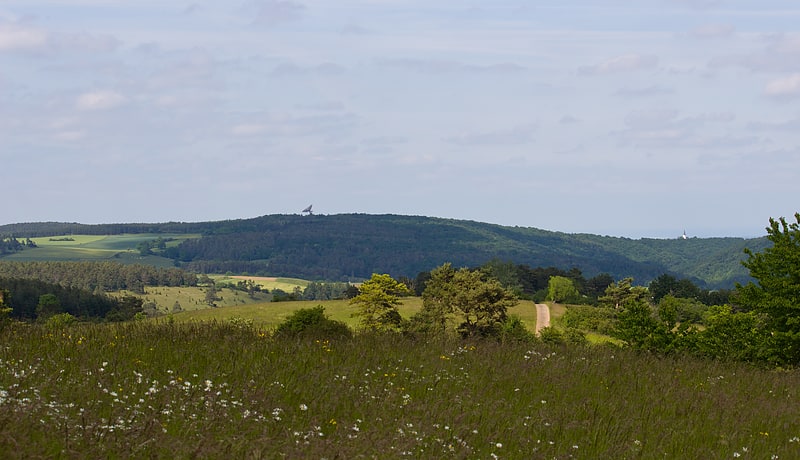
Also known as: Stockert
Hill in Germany. The Stockert is a 435-metre-high hill which rises between Eschweiler and Holzheim in the district of Euskirchen in the borough of Bad Münstereifel, in the Eifel mountains of Germany, and west of the city of Bonn.[1]
Address: Astropeiler Stockert 2-4, 53902 Bad Munstereifel
Hürten Heimatmuseum
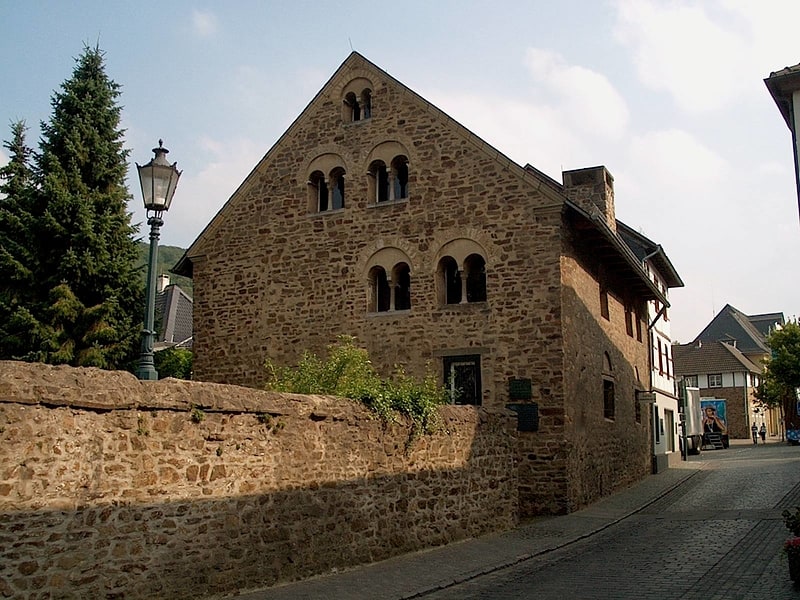
Top attraction, Museum
Address: Langenhecke 6, 53902 Bad Münstereifel
Pharmacy Museum

Also known as: Apothekenmuseum
The pharmacy museum in Bad Münstereifel displays materials from the 19th and 20th centuries in a functioning pharmacy, for example, an officina, laboratory, materials chamber, herb cabinet, herb garden, etc. The shelves date back to 1806. The shelves date back to 1806. During special tours, visitors can slip into the role of a pharmacist and twist pills and pour suppositories themselves.
The museum is located in the house that housed the Swan Pharmacy from 1806 to 1994; it was acquired in 1995 by the Förderkreis für Denkmalpflege in der Stadt Bad Münstereifel e. V. and subsequently renovated and expanded.
The rococo statues in the garden area are works of the sculptor Adam Ferdinand Dietz and come from the park of Gut Giersberg.
Since 2007, the Pharmacy Museum has housed as a (permanent) loan a small collection of paintings by painters who worked in Münstereifel during the time of the poet Jakob Kneip. Jakob Kneip had "sheltered" in 1941 in the Eifel village of Pesch (near Münstereifel) and found here in Ina Bresgen, the owner of the Schwanenapotheke, a valuable conversation partner, critical listener and "lector". The place of these encounters was today's Pharmacy Museum. Through Kneip, his Düsseldorf artist friend Otto Pankok, who was classified as a degenerate painter from 1936 on, among other things, because of his gypsy motifs and friendship with gypsies and Jews, also came to Pesch.
Address: Wertherstr. 13-15, 53902 Bad Munstereifel
Alte Burg
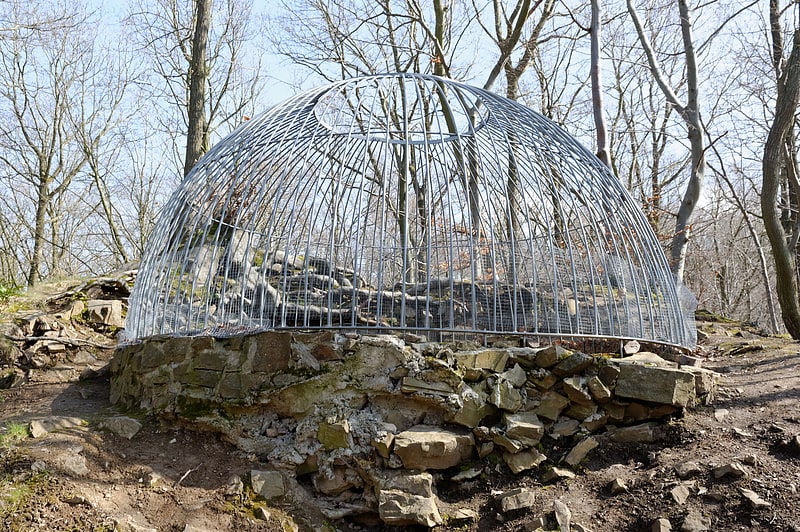
The Alte Burg in Bad Münstereifel, Germany, is a circular rampart that is the remains of a fortification from the Carolingian period. The refuge castle acted as a place of retreat for the local population and as protection for the daughter monastery of Prüm Abbey. The defences dating to the 9th century have been designated as a protected monument. The castle site lies within the county of Euskirchen in the state of North Rhine-Westphalia.
The spur castle site lies northeast of the town centre on a hill spur, the second Quecken, above the Erft valley east of the B 51 federal highway at a height of 315 to 363 metres (1,033 to 1,191 ft). It is 300 metres (980 ft) long and 80 metres (260 ft) wide, excluding the outworks. There were at least two periods of construction. In the northeast is a motte.
In the highest section of the site, the rubble stone foundation of a round tower has survived. In the 19th century a silver coin bearing the image of Louis the Pious is supposed to have been found here; it has not survived. In 1972 parts of the site were archaeologically investigated. During the excavations shards of pottery from the 9th century with decorations (Rollrädchenverzierung) were discovered.[2]
Radioteleskop Effelsberg
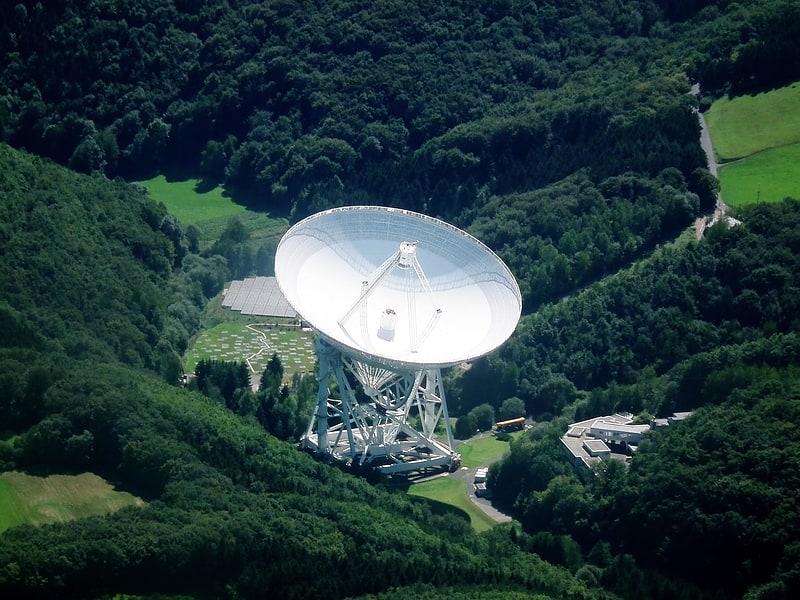
Research institute in Bad Münstereifel, Germany. The Effelsberg 100-m Radio Telescope is a radio telescope in the Ahr Hills in Bad Münstereifel, Germany. For 29 years the Effelsberg Radio Telescope was the largest fully steerable radio telescope on Earth, surpassing the Lovell Telescope in the UK. In 2000, it was surpassed by the Green Bank Observatory's Robert C. Byrd Green Bank Telescope in Green Bank, US, which has a slightly larger elliptical 100 by 110-metre aperture. The telescope is part of the Event Horizon Telescope, and in part made the first picture of a Supermassive black hole[3]
Address: Max-Planck-Str. 28, 53902 Bad Munstereifel
Heinz-Gerlach-Halle
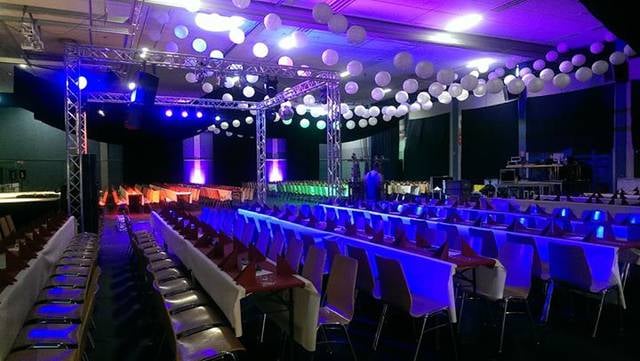
Address: Im Goldenen Tal 6, Bad Münstereifel
Stiftskirche St. Chrysanthus u. Daria
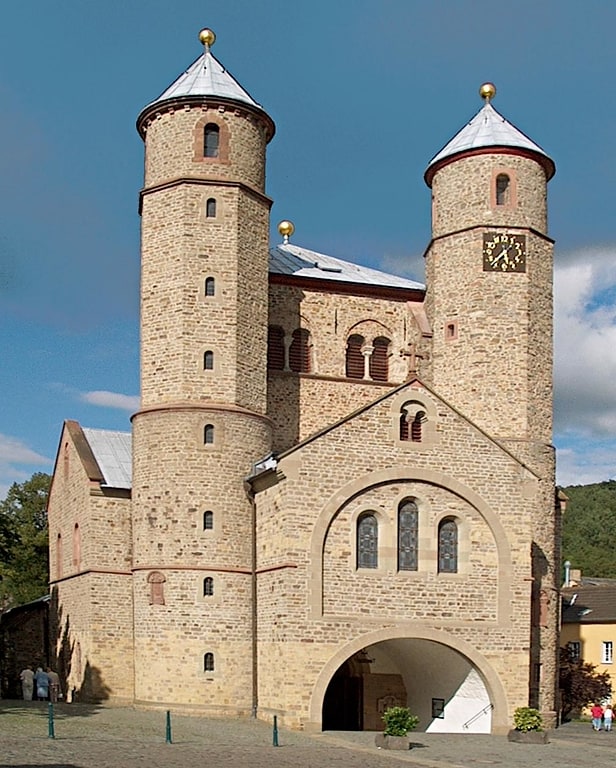
Church
Address: Langenhecke 3, 53902 Bad Münstereifel
St. Donatus
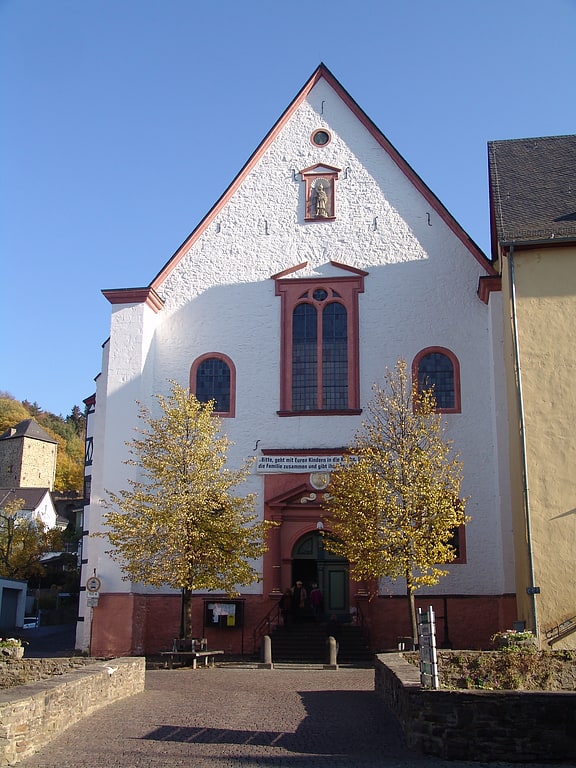
Church
Address: Delle 4, 53902 Bad Münstereifel
Jewish Cemetery

Also known as: Jüdischer Friedhof
The Bad Münstereifel Jewish Cemetery is located in the city of Bad Münstereifel in the district of Euskirchen in North Rhine-Westphalia.
In the Jewish cemetery, which was occupied from before 1823 until 1932, there are still 87 gravestones (mazewot). The forest cemetery is located in the Queckenwald. In the early 1930s, 67 Jews lived in Münstereifel. There is a memorial stone for the deported Jews in the cemetery.
The memorial stone commemorates 19 deported Jewish citizens by name, even if the number of victims was significantly higher. It was donated by Ludwig Kaufmann in 1961 when the cemetery was restored by the "Alter Münstereifeler Verein".